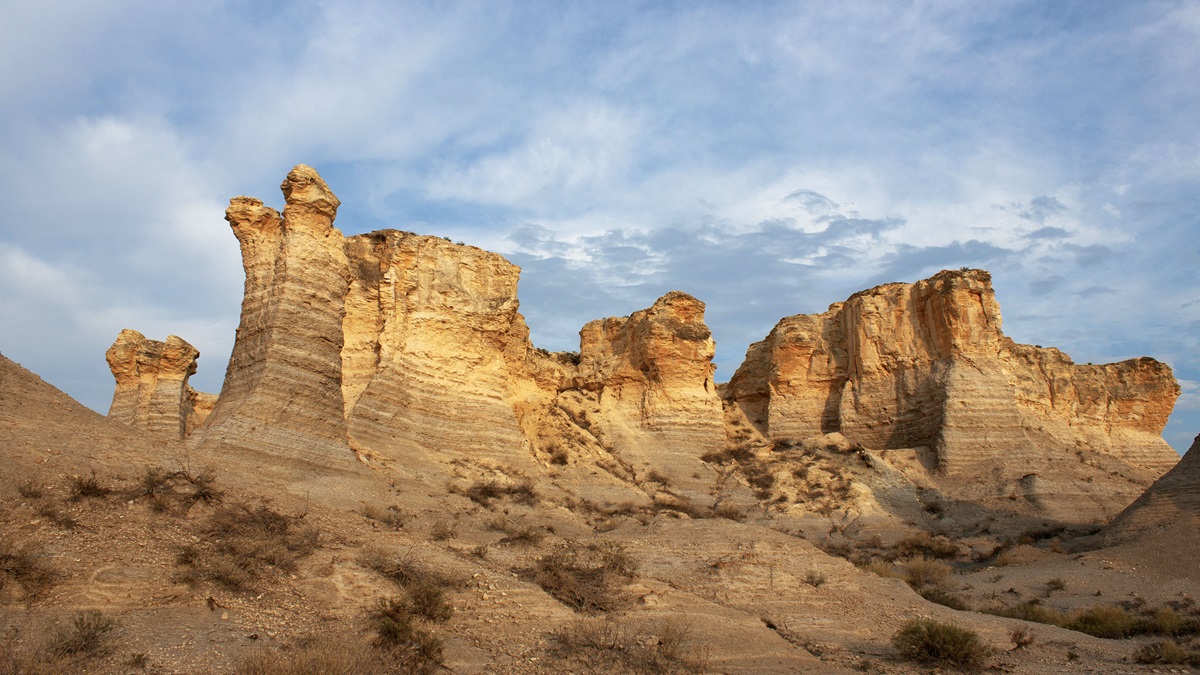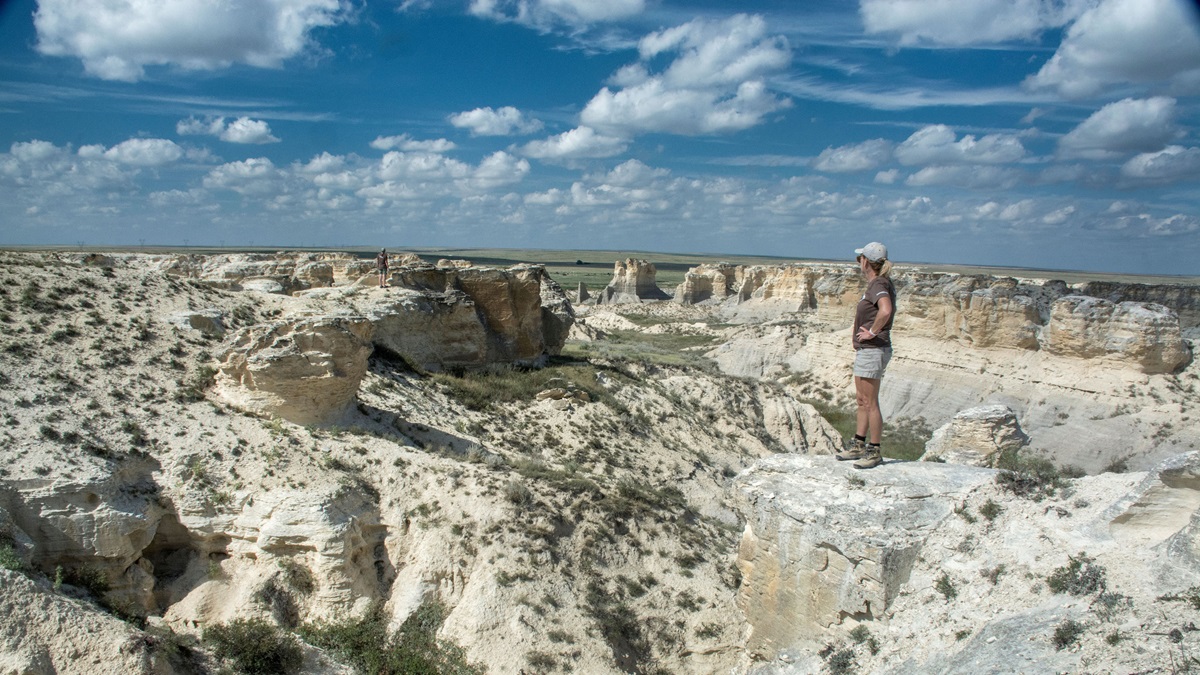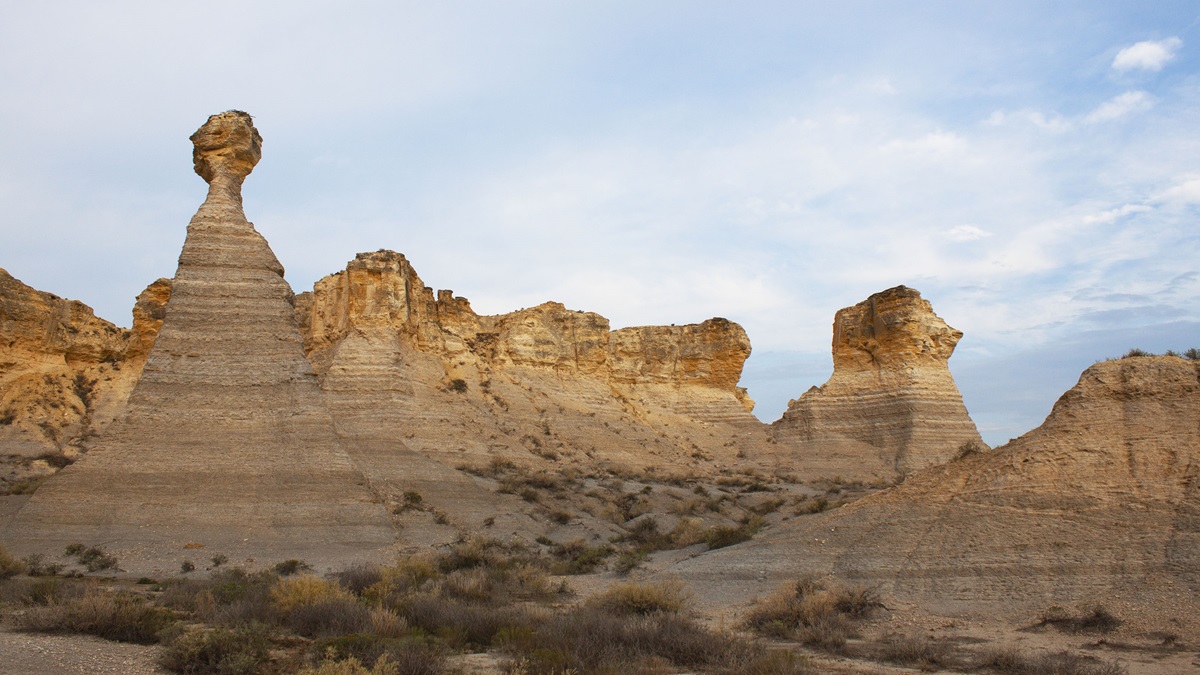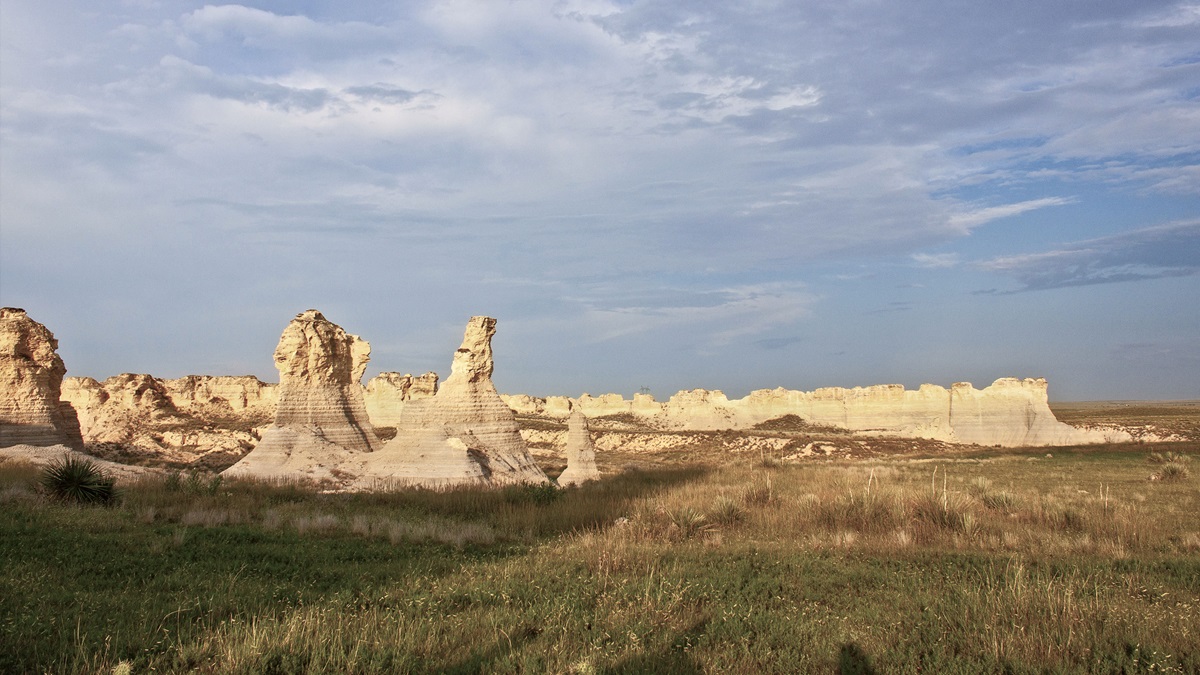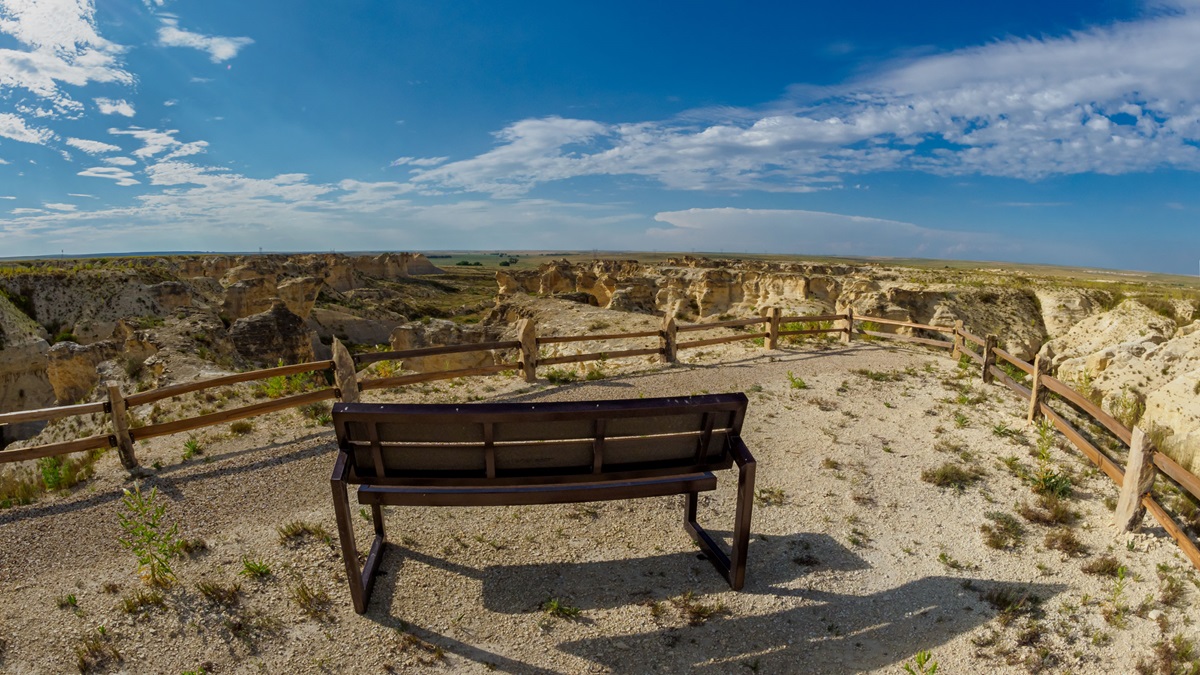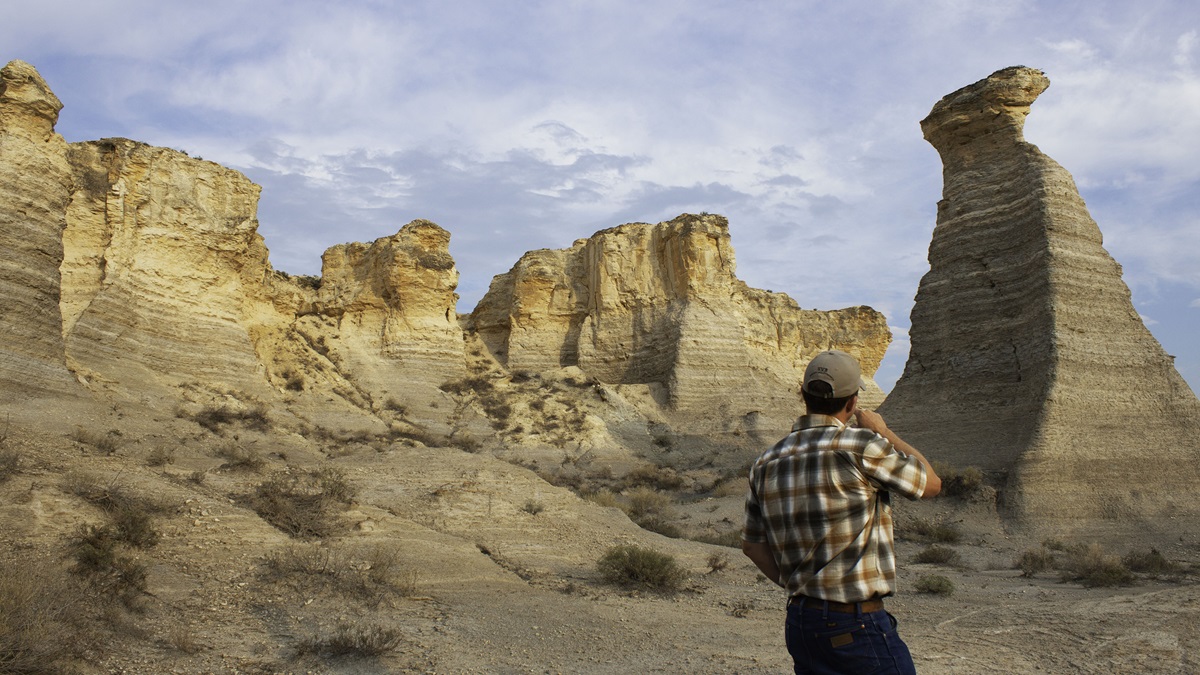Midwest rock spires evoke Holy City
Little Jerusalem Badlands State Park, Kansas
A new state park opened in western Kansas on October 12, the culmination of a three-year process to make public a treasured piece of private land featuring 100-foot-tall spires and cliffs of eroded Niobrara Chalk, a layer of rock deposited some 85 million years ago.
Little Jerusalem Badlands State Park is the first chance for visitors, including many Kansas residents, to see that a landscape of this magnitude exists in the state. The park showcases a mile-long stretch of bluffs and towering free-standing spires first formed by sediment that settled at the bottom of the Western Interior Seaway that covered most of central North America millions of years ago. The sediment became compressed over time, and geologists say the seaway floor was lifted by the same tectonic shifting that formed the Rocky Mountains.
While there may be thousands of Niobrara Chalk exposures in Kansas, this formation is unique for its combination of acreage, the number of columns, and the height of the columns rising up more than 100 feet above the nearby Smoky Hill River. You’ll find fossilized evidence of sea creatures as well as a variety of living wildlife and plants, from ferruginous hawks that like to nest in the rocks to Great Plains wild buckwheat that only grows in the chalk prairies of western Kansas.
In 2016, The Nature Conservancy purchased the land—a 332-acre area encompassing 220 acres of dramatic chalk rock formations—from the ranching family who had owned it for generations. They rejected offers from buyers wanting to turn it into a dig site for fossils, an off-road vehicle park, or a high-end hunting preserve. Instead they asked that The Nature Conservancy make it accessible to the public while protecting it. The same erosion characteristics that have shaped the soft limestone into fascinating formations also make the ecosystem susceptible to damage.
To do that, The Nature Conservancy partnered with the Kansas Department of Wildlife Parks and Tourism. The conservancy continues to own the land and manage the natural resources; the Kansas Department of Wildlife Parks and Tourism manages outdoor recreational activities in a way that protects the fragile rocks. That means it’s not your typical state park.
Open year-round, admission requires a daily vehicle permit, currently $5, or an annual Kansas state parks vehicle pass. Vehicle access is limited to a parking area close to the entrance gate, open from sunrise to sunset. From the parking lot you have access to restrooms, a roofed structure with interpretive panels, distant views of the formations, and two permanent trails for pedestrian use only.
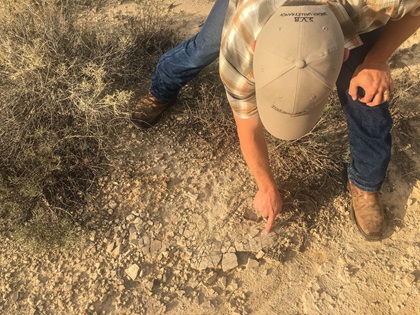
The Overlook Trail takes you one-quarter mile along a crushed rock surface to a scenic viewpoint of the north side of the formation. The Life on the Rocks Trail winds 1.5 miles along the rim of the rocks with multiple bends for a variety of views and two scenic overlooks. Signage on this trail focuses on the plants and animals living here.
“At the end of the rim trail is an overlook that is one of the more impressive spots out in the formation,” said Matt Bain, a biologist who serves as Western Kansas conservation manager for The Nature Conservancy. “You’re looking north over a series of canyons, and it gives you a feel for the height and the number of columns.”
You’re not allowed off trail unless accompanied by park staff during a guided tour. The views from the rim are incredible, but if you’re making a trip here to see the formations, time your visit for a tour into the interior of the park (call Historic Lake Scott State Park at 620-872-2061 to schedule in advance). Standing at the base of these formations is extraordinary.
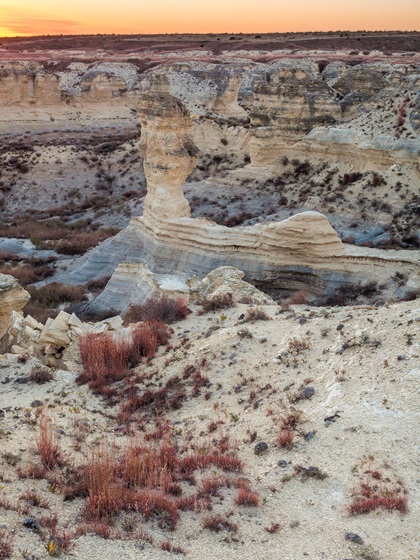
Little Jerusalem Badlands State Park is about 30 miles south of Interstate 70, just off Highway 83 between Oakley, population 2,000, and Scott City, population 3,800. Scott City Municipal Airport is the closest airport with FBO services. The largest city in the area is Garden City, population 26,000, about 50 miles south and home to Garden City Regional Airport.
The park is on the state’s Western Vistas Historic Byway, whose website lists options for lodging, dining, shopping, and other points of interest in a three-county area.
Here are the closest historical and recreational attractions to consider.
- Keystone Gallery in Scott City to see art and fossils or to get a map to Monument Rocks, a smaller chalk formation and the state’s first National Natural Landmark (1968).
- Tours of Duff’s Buffalo Ranch, a working ranch with a herd of 300 to 400 bison; you must arrange tours in advance by calling 620-874-5120.
- Lesser Prairie Chicken lek viewing public tours are conducted by Prairie Tours and Guide Services at several locations.
- Camp, canoe, fish, venture on multi-use trails, and stop at historic sites such as the El Quartelejo pueblo ruins at Historic Lake Scott State Park in Scott City.
- Explore the rifle pits at Battle Canyon, the site of the last engagement between Native Americans and U.S. troops in Kansas.
- El Quartelejo Museum and Jerry Thomas Gallery and Collection in Scott City.
- Hike or ride horses on two trail loops on the western edge of Smoky Valley Ranch, a 17,290-acre working cattle ranch adjacent to Little Jerusalem and also owned by The Nature Conservancy.
- Buffalo Bill Cultural Center in Oakley.
- Fick Fossil and History Museum in Oakley.




